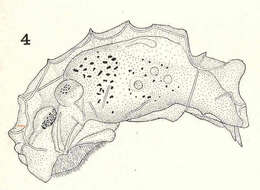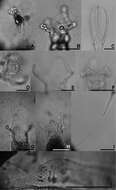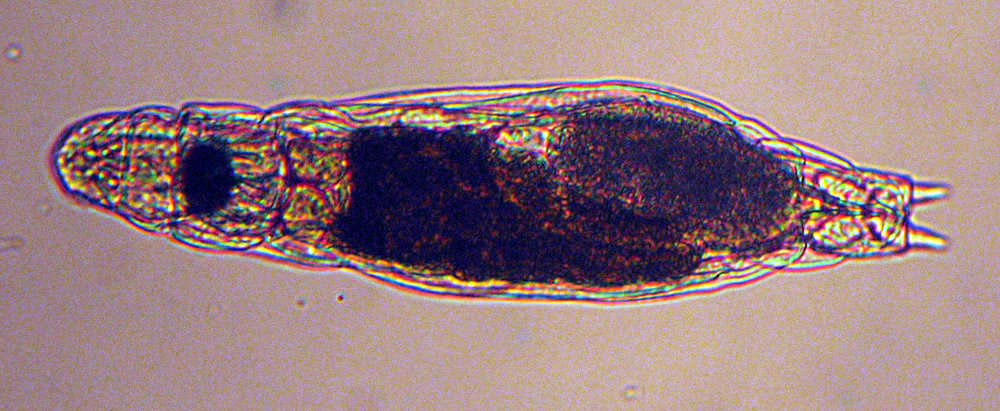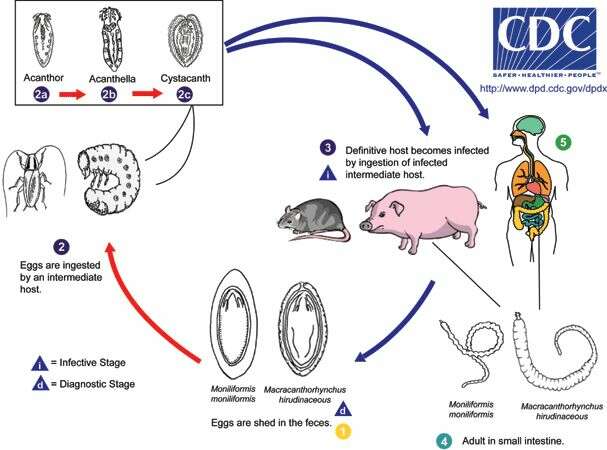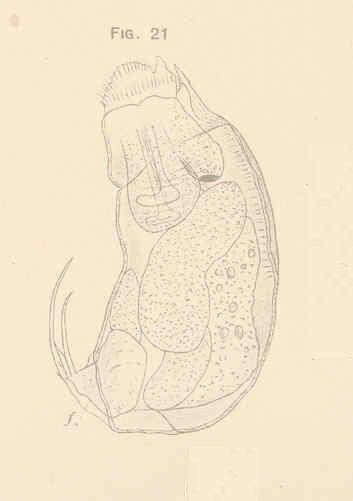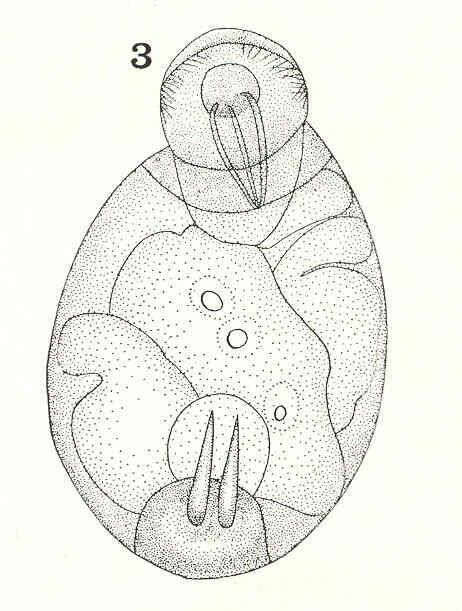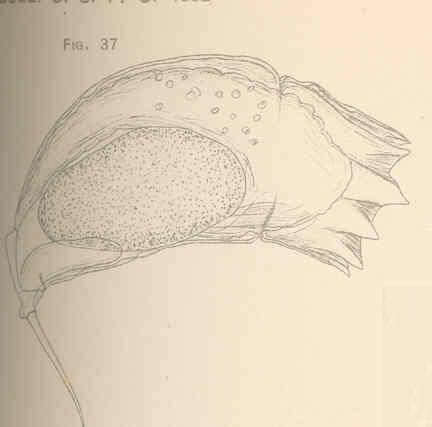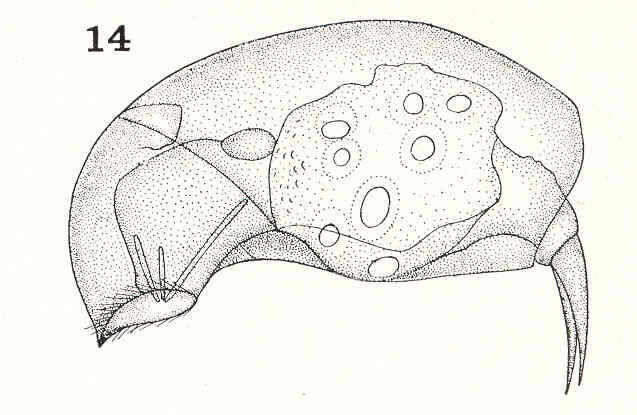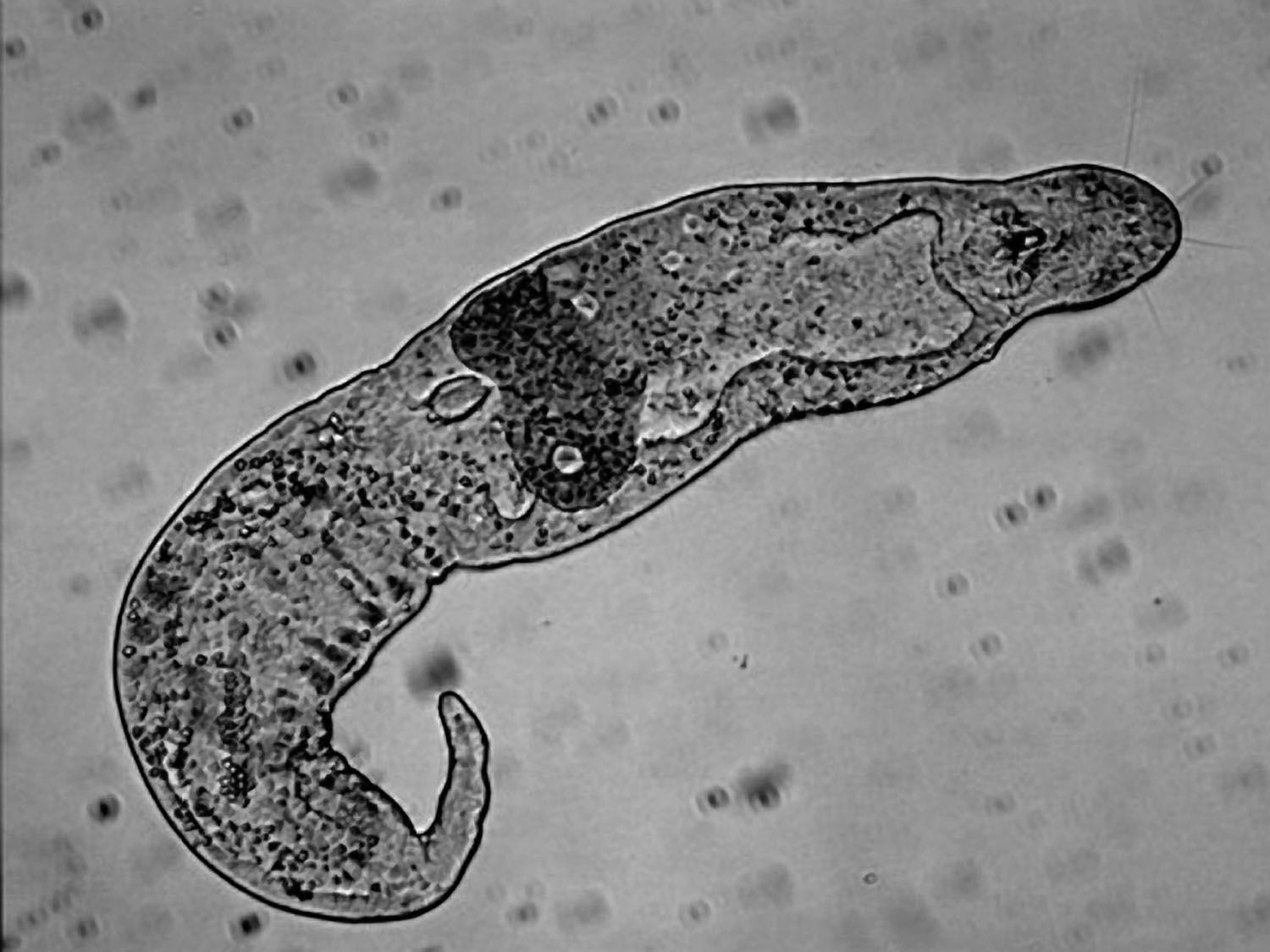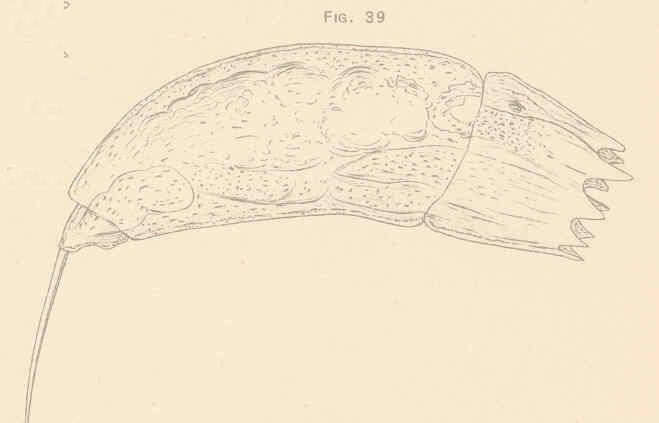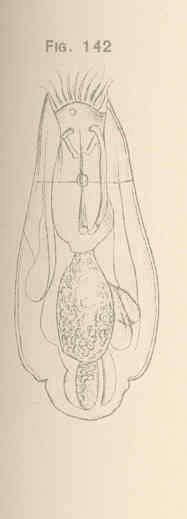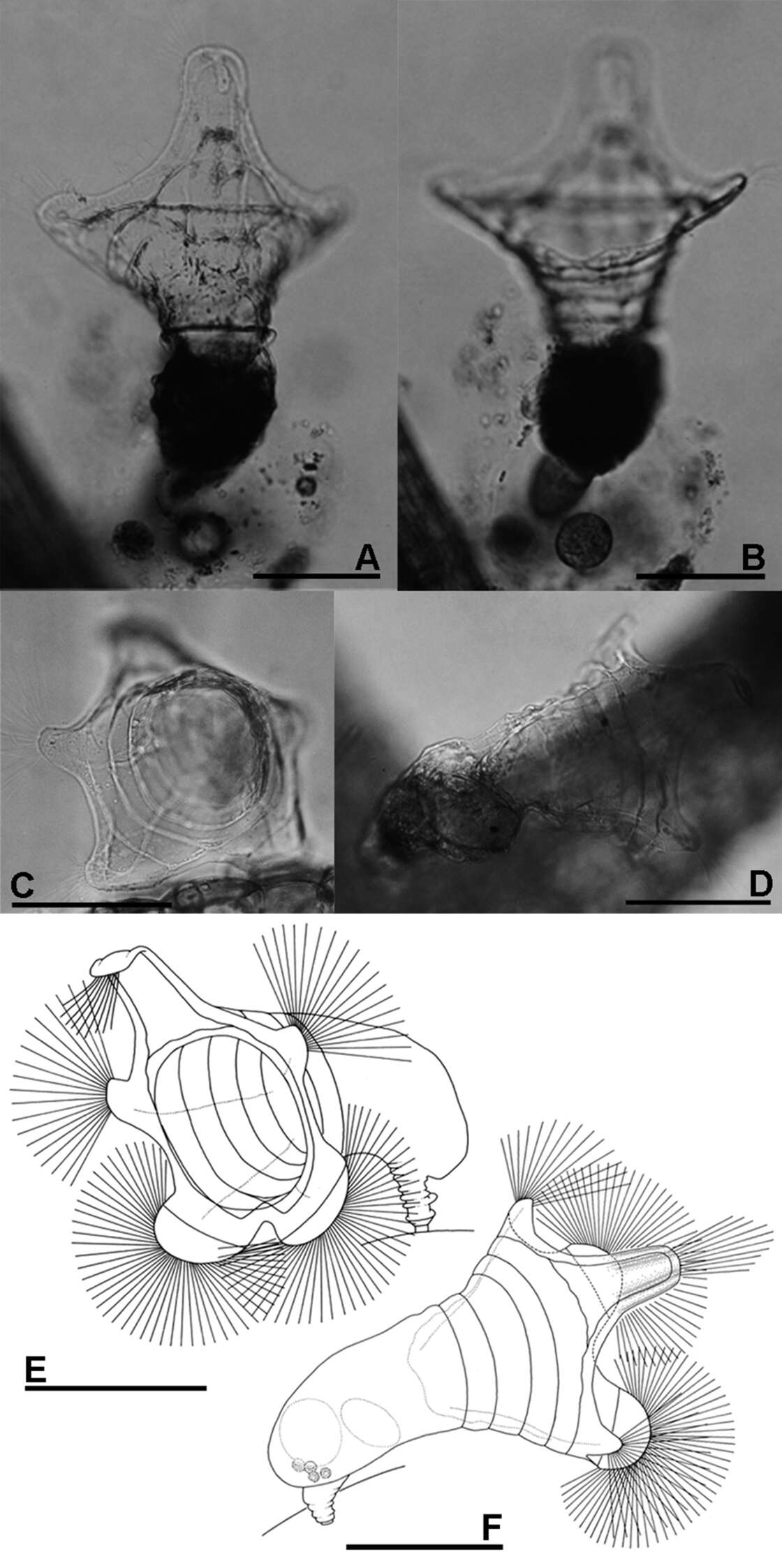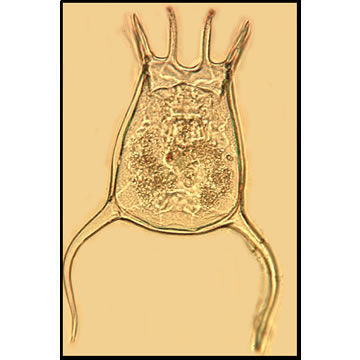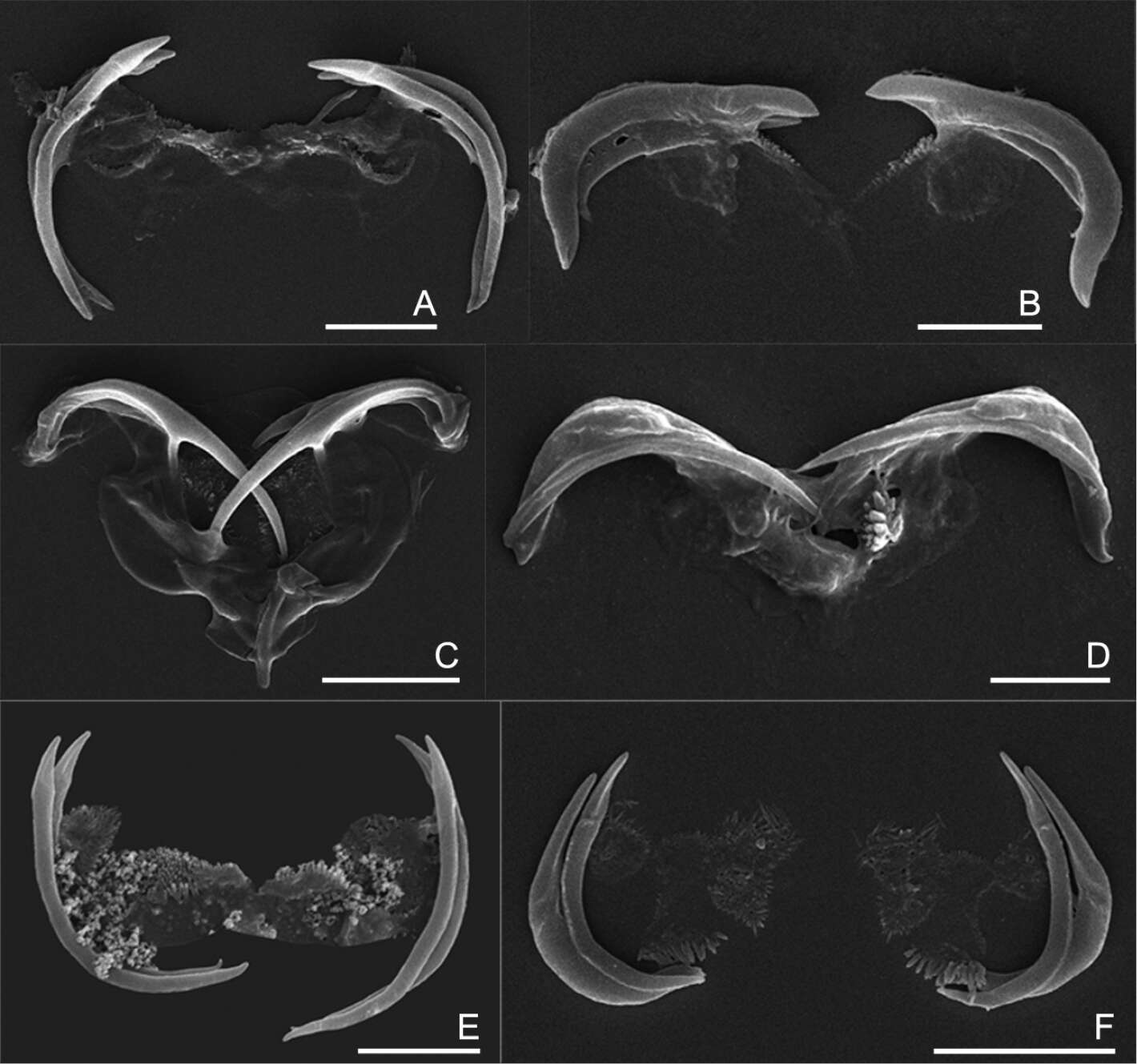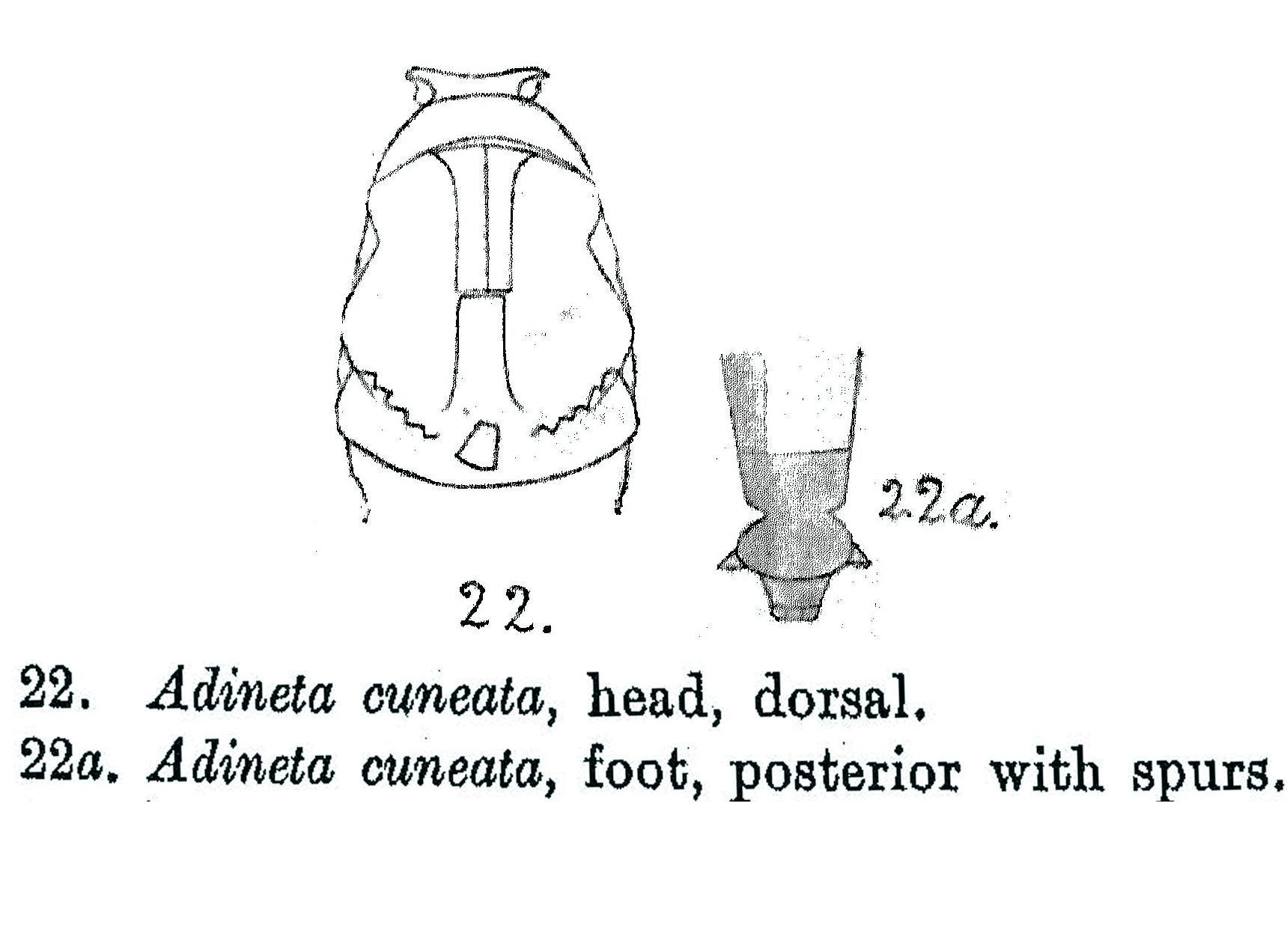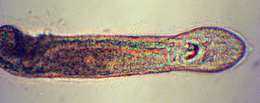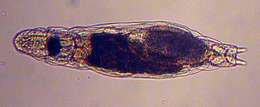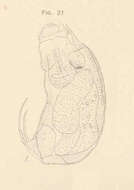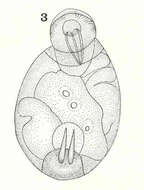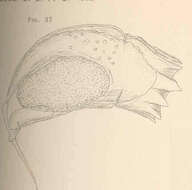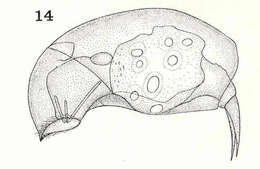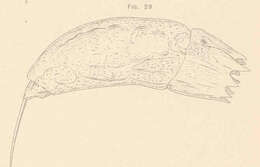-
All Biocode files are based on field identifications to the best of the researcher’s ability at the time.
-
All Biocode files are based on field identifications to the best of the researcher’s ability at the time.
-
Centers for Disease Control/Division of Parasitic Diseases and Malaria
EOL staff
Life cycle of acanthocephalans Moniliformis moniliformis and Macracanthorhynchus hirudinaceus Eggs are shed in the feces of the definitive hosts (1), which are usually rats in the case of M. moniliformis and swine for M. hirudinaceous, although carnivores and primates, including humans, may serve as accidental hosts. The eggs contain a fully-developed acanthor when shed in feces. The eggs are ingested by an insect intermediate host (2) (usually scarabaeoid or hydrophilid beetles for M. hirudinaceus and beetles or cockroaches for M. moniliformis). Within the hemocoelom of the insect, the acanthor (2a) molts into a second larval stage, called an acanthella (2b). After 6-12 weeks, the worm reaches the infective stage called a cystacanth (2c). The definitive host becomes infected upon ingestion of intermediate hosts containing infective cystacanths (3). In the definitive host, liberated juveniles attach to the wall of the small intestine, where they mature (4) and mate in about 8-12 weeks. In humans (5), the worms seldom mature, or mature but will rarely produce eggs.From
Centers for Disease Control Parasites and Health website
-
Diurella percellus Gosse, Left side of extended specimen.
-
Diurella tenuior Gosse. Larger specimen, dorsal or dorso-dextral view.
-
Taphrocampa annulosa Gosse, as seen from above; body curved so that the food is not visible.
-
Rattulus capucinus Werz. & Zach. Ventral view. The toe extends obliquely toward the observer, so that its full length is not seen.
-
Pleurotrocha parasitica n. sp. Ventral view.
-
Phuripong Meksuwan, Pornsilp Pholpunthin, Hendrik Segers
Zookeys
Figure 2.A, B Collotheca ferox (A dorsal view B ventral view) C–F Collotheca orchidacea sp. n. (C, E frontal D, F dorsal). Scale bars: A–F = 100 µm (A, B by Rapeepan Jaturapruek).
-
All Biocode files are based on field identifications to the best of the researcher’s ability at the time.
-
Diurella rousseleti Voigt. Side view of retracted specimen.
-
Taphrocampa annulosa Gosse. Side view.
-
Rattulus capucinus Wierz. & Zach. Right side.
-
Pleurotrocha parasitica n. sp. Side view.
-
Phuripong Meksuwan, Pornsilp Pholpunthin, Hendrik Segers
Zookeys
Figure 4.A Collotheca heptabrachiata, lateral B Collotheca ornata, ventral C Stephanoceros fimbriatus, lateral D Collotheca stephanochaeta, lateral E Collotheca ambigua, ventral F Collotheca algicola, ventral G, H Collotheca ornata f. cornuta (G dorsal H lateral) I Collotheca campanulata f. longicaudata, attachment stalk J Collotheca ferox, ventral corona margin. Scale bars: A, B, D–H, J = 50 µm, C, I = 100 µm.
-
-
Diurella rousseleti Voigt. Side view of retracted specimen.
-
Elosa worrallii Lord, dorsal view, after Lord.
-
Rattulus carinatus Lamarck. Dorsal view.
-
Phuripong Meksuwan, Pornsilp Pholpunthin, Hendrik Segers
Zookeys
Figure 2.A, B Collotheca ferox (A dorsal view B ventral view) C–F Collotheca orchidacea sp. n. (C, E frontal D, F dorsal). Scale bars: A–F = 100 µm (A, B by Rapeepan Jaturapruek).
-
http://www.cfb.unh.edu/CFBKey/html/Organisms/PRotifera/GKeratella/keratella_quadrata/keratellaquadrata.html
Marine Rotifera LifeDesk
Keratella quadrata
-
Rattulus cylindricus Imhof. From Lake Bologoe, Russia, left side of retracted specimen, bearing egg.
-
Phuripong Meksuwan, Pornsilp Pholpunthin, Hendrik Segers
Zookeys
Figure 5.The uncinate trophi of Collothecidae species. A Collotheca ferox B Collotheca campanulata C Collotheca trilobata D Collotheca tenuilobata E Collotheca orchidacea sp. n. F Stephanoceros millsii. Scale bars: A, B, D, E = 5 µm, C, F = 10 µm.
-






